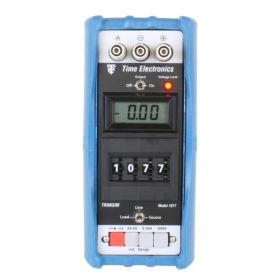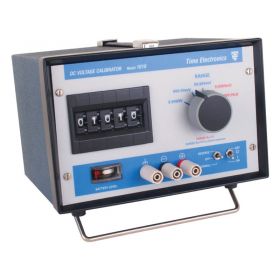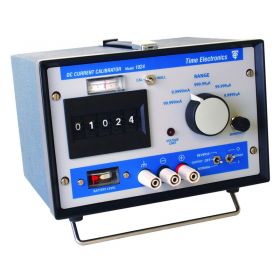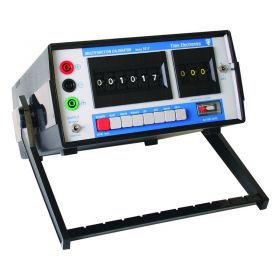Voltage, Current & Loop Calibrators
-

 Free UK DeliveryTime Electronics 1077 Milliamp Transducer Simulator£1,318.80 £1,099.00
Free UK DeliveryTime Electronics 1077 Milliamp Transducer Simulator£1,318.80 £1,099.00- Easy operation and LCD screen for measurement referencing
- Three modes to choose from
- Comes with free rubber protective case for fieldwork and travelling
1099 Reward PointsPrice Match Guarantee1077 -

 Free UK DeliveryTime Electronics 1010 DC Voltage Calibrator£1,534.80 £1,279.00
Free UK DeliveryTime Electronics 1010 DC Voltage Calibrator£1,534.80 £1,279.00- Accuracy of 0.02%
- Fitted safety terminals
- Choose battery or mains power supply
1279 Reward PointsPrice Match Guarantee1010 -

 Free UK DeliveryTime Electronics DC Current Calibrator with Null Measuring£1,698.00 £1,415.00
Free UK DeliveryTime Electronics DC Current Calibrator with Null Measuring£1,698.00 £1,415.00- Can be used in numerous situations
- Compatible with different types of plugs
- Incredible accuracy of 0.02%
1415 Reward PointsPrice Match Guarantee1024 -

 Free UK DeliveryTime Electronics DC Multifunction V/I/R Calibrator£1,794.00 £1,495.00
Free UK DeliveryTime Electronics DC Multifunction V/I/R Calibrator£1,794.00 £1,495.00- Tilt stand can be adjusted to suit you
- Powered by rechargeable battery or mains plug
- Five ranges of DC voltage
1495 Reward PointsPrice Match Guarantee1017
About Voltage, Current & Loop Calibrators
Also known as current loops, 4-20mA sources are one of the most common methods used in the process industry for transmitting data between sensors and the applications that control and monitor them. The main advantage of a current loop is it can be combined with a huge variety of different sensors to measure temperature, pressure, liquid flow, or light. This data is then compatible with a wide range of different management applications that interoperate with the data and react accordingly.
4-20mA current loops work by taking the results from the sensor and converting it to a proportional current. This means that a zero result causes a 4mA to be transmitted and a 20mA current is sent when the sensor is at full capacity. This information is then sent through copper cables to a receiver at the controller. The controller then decodes the sent signal into the format that is required by the process monitoring application.
The drawback with this method is that over long distances the signal can eventually erode as the voltage begins to wane. An engineer must also be careful when laying these cables to ensure that no electrically noisy systems are located close by, otherwise, they can affect the signal. The main precaution that can be taken is to ensure the use of shielded cabling but this can become too expensive if used over long distances.
To ensure that a current loop is operating effectively engineers often use current calibrators to test the cables and ensure that there are no issues that need resolving no matter what their source.


